Education of Traditional Medicine
Welcome to Education and Training in the Traditional Integrative Therapeutic Approach! We offer programs for individuals and groups interested in deepening their knowledge and practice of traditional integrative therapies, aiming to improve both personal and professional Life. Our education is open to everyone — whether you are seeking personal growth, looking to begin your Ayurvedic journey, or enhancing your existing therapeutic or medical practice. Our program is structured without formal exams during the study period. Instead, learning takes place through a combination of group and individual study. Final certification (for doctoral-level studies) involves a committee that participates in the final diploma defense. Training focuses on practical experience — students observe mentors working directly with clients or patients. This visual and hands-on learning strengthens memory and understanding, helping future therapists or physicians apply therapeutic knowledge more effectively.
We welcome participants from various wellness fields, including:
- Health resorts (Ayurvedic therapies, special treatments)
- Spa centers and Hotels (Wellness programs)
- Massage salons (Holistic body and facial / head massage programs)
- Health tourism (Therapeutic and relaxation packages, detox programs)
- Psychosomatic counseling (Yoga / Pranayama / Meditation, Jyotish medical therapy)
- Nutrition and Lifestyle coaching.
In addition to long-term education, we also offer shorter workshops and courses, ideal for those seeking essential knowledge for a higher quality of life or work. These programs are suitable both for professionals in therapeutic fields and for individuals who want to apply traditional wisdom in their daily lives — to support Health, Vitality, and Happiness.

A well-educated and conscientious specialist is the wealth of the state and the environment in which they live and work.
Welcome to the desired education – gaining knowledge from becoming an Ayurvedic massage therapist to becoming an Ayurvedic doctor (Bachelor of Ayurvedic Medicine and Surgery – B.A.M.S.); from acquiring the basics of Naturopathy and Tibetan medicine to becoming a doctor specializing in Acupuncture. Academic credits earned through the Institute of Ayurveda, Ayur Ashram, can also be recognized for studies in Asia. Through legislation under the World Health Organization (WHO), Ayurveda – India, as well as Sowa-Rigpa – Tibet, are recognized as traditional systems (for prevention and integrative treatment of chronic diseases). Legal documents are harmonized with the sources from which this knowledge originates, under the Indian Ministry of Traditional Medicine – AYUSH (Ayurveda, Yoga and Naturopathy, Unani, Siddha, and Homeopathy). The Ayur Ashram (Consortium India) was inaugurated on August 28, 2014. Certificates and Diplomas are valid in some countries outside of Asia, depending on the regulations of the respective Ministry of Health or Ministry of Culture and Human Health Insurance system.
Students should be aware that the learning and study process for becoming an Ayurvedic doctor, or a practitioner of Tibetan Naturopathy or Acupuncture, is very demanding. It requires the completion of practical training in India, Nepal, or Tibet with a specific mentor, in an institution approved by a Consortium partner, and in accordance with AYUSH standards. Today, Indian medicine – Ayurveda, and Tibetan medicine – Sowa-Rigpa, hold an important place in the field of future medicine. Both systems consider the physical body as the crystallization of deeply rooted mental tendencies carried over from previous lives. This confirms that the mind is a reflection of the body and a repository of impressions accessed through our senses. It also means that we can only realize our true self and eternal nature beyond the mind-body unity – where all physical and mental problems originate – through understanding our Ayur-Life path and Karma. Jyotish, a profound and sophisticated form of astrology derived from ancient Vedic traditions, helps us realistically assess our strengths and challenges, enabling us to optimize our full potential. It gives us the confidence to manifest our true destiny, allowing us to create success, happiness, and harmony across all levels of Ayur (Ayus[r]) Life.
Before the enrollment interview for the Traditional Medicine Training Program, applicants are required to submit their Curriculum Vitae (CV) in English via email to: info@ayur-ashram.in. After receiving the email, we will schedule an interview prior to final admission into the program. Through practical training, the student is guided towards developing sensitivity and awareness for others, which is the foundation of therapeutic work. It is also important to mention that the student, through the course of study, gains a form of inner reward by raising awareness of their own creative growth and achieving a sense of internal (identity) satisfaction. Practical training takes place at the locations where the Institute of Ayurveda – Ayur Ashram operates: Slovenia, Croatia, India, and Tibet. The learning process focuses on identifying the causes of weakness and difficulty in human beings that arise from the denial of optimism, hope, and happiness – all of which are essential for one’s identity and the healthy functioning of Life. Therapeutic work is based on mutual respect and equality, through which clients are guaranteed strong and vital health.
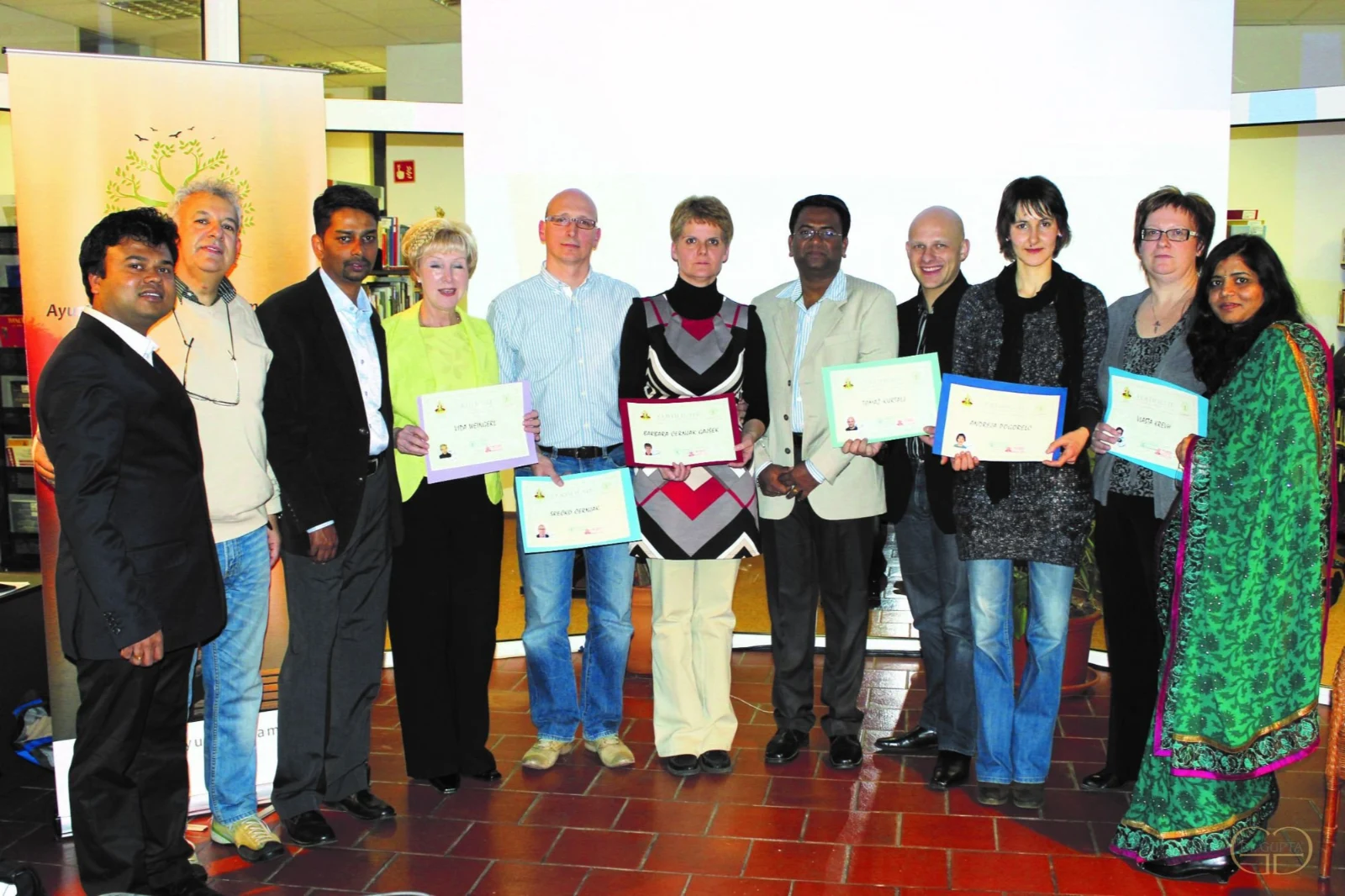
Objective of learning Ayurvedic medicine – Ayurvedic medicines entails three phases of healing or the state of illness. These are Samsodhana (the process of cleansing), Samsamana (palliative care) and finally Nidanaparivarjana (the treatment of causes). In this way it does not only help with discovering the root of the physical state, but it also cures the state of the human soul and consciousness as well as conducting healing on the basis of the characteristics which are often the causes of illness or its various body states. Not having a deeper insight into Ayurveda many people think that we, as individuals, can be strictly categorized into one of the three Doshas (it means health) Vata, Pitta and Kapha, whereas we are really made up of all three Doshas. Ayurveda teaches, that consciousness is the energy of health, which works through all five basic Elements or Panchatattva (Ether-Akashatatva, Air-Vayutatva, Fire-Agnitatva, Water-Apastatva, Earth Prithvitatva). When the organism of a person is healthy, then all five elements are in balance, but when the balance breaks down, we get sick.
The Marma Anatomy – points / body fields are the key (insight into health) in the body where vital fluids flow through muscles, veins, arteries, bones and joints. Marmas can be referred to as intersections between the physical, psychic, astral and spiritual bodies. A good traditional practitioner or through pulse diagnostics (Nadi Pariksha), prescribes therapeutic processes for balancing the health of all three Doshas Vata-Pitta-Kapha, along the paths which vital fluids flow through organs and glands. In the following, it is mandatory that the client / patient (preventive) or in a curative state must be given an insight into his eating habits and lifestyle, and he will be prescribed a list of Food / Diet from his/her Life environment, which covers all steps from preparation to consumption of the same – Food / Diet plan for balancing Prana or life ropes Guna that “brings or takes” away vital/immune health: Sattva Vata Guna food that sustains the body; Rajas Pitta Guna food that creates and develops the body and Tamas Kapha Guna food that destroys the body. The Ayurvedic expert obtains the parameters of the doshas through the processes of Nadi (examination) and Pariksha (diagnosis) as well as establishing the causes (Vikruti) of the illness i.e., the balancing of the state of the bodily fluids of the Dosha and Elements.
Ayurvedic medicine defines the absence of disease in various aspects of life – in the field of psychology it is defined by mental health; in the area of physical and spiritual condition, it is measured by the pathological condition through the areas of sociology, representation in interpersonal relations. As an Ayurvedic Practitioner, you will use your knowledge to create a therapeutic program for your client that will bring vitality through determining the state / balance of the three Guna Doshas (Lifestyle, upbringing and food in which the Pranic environment we are born / Prakruti). For a more effective outcome in the healing of the Dosha the Panchakarma program, which focuses on the endocrine, nervous, digestive, circulatory and bone systems, is performed. This therapeutic program eliminates those toxic elements from the body which are most harmful to both health and vitality. Ayurveda has developed through four of six Indian orthodox philosophical systems, namely Samkhya, Yoga, Niti, Vaisheshika. Samkhya literally means „calculate “and in essence it is a philosophical system which speaks about the entanglement of the eternal and unchanging soul (purusha) in the web of the changing primordial matter (Prakiti). The metaphysics of Samkhya is supplemented by Yoga, a practical method, which aims for absolute freedom defined as „the cessation of all sources of consciousness “. Neither does it have two meanings as in „the rules of logical reasoning“ or „the rules of successful control.” Vaisheshika literally means „the science of multiplicity “, which aspires to define the world through physics. Each of these four forms of science belong to the most ancient of writings and they were established and passed on orally to many schools by the ancient sages, the Rishis.
The Indian as Tibetan medicine primarily guides the person to prevent illness, in other words, to raise their vitality. Ayurveda includes Yoga, Vedanta, Tantra and Buddhism. Ayurveda and Yoga are also connected to the system of Tantra, which offers various techniques for changes in the nature of consciousness. However, real Tantra is really so much more than the currently popular ideas about it, which merely promote it as a system of sexual (fantasy erotic) practices. Tantra (Psychology of the Life, Medical Jyotish practitioner) is a complete system for human development, which gives us the opportunity to improve all aspects of our lives. The Ayurvedic medicine Tantric interpretation of a healthy and happy life is rooted in our positive thinking and daily work as well as our relations to ourselves and others. With its good intentions, the human being is spreading the blessings and thoughts, which, in turn, can return to him/her manifold.
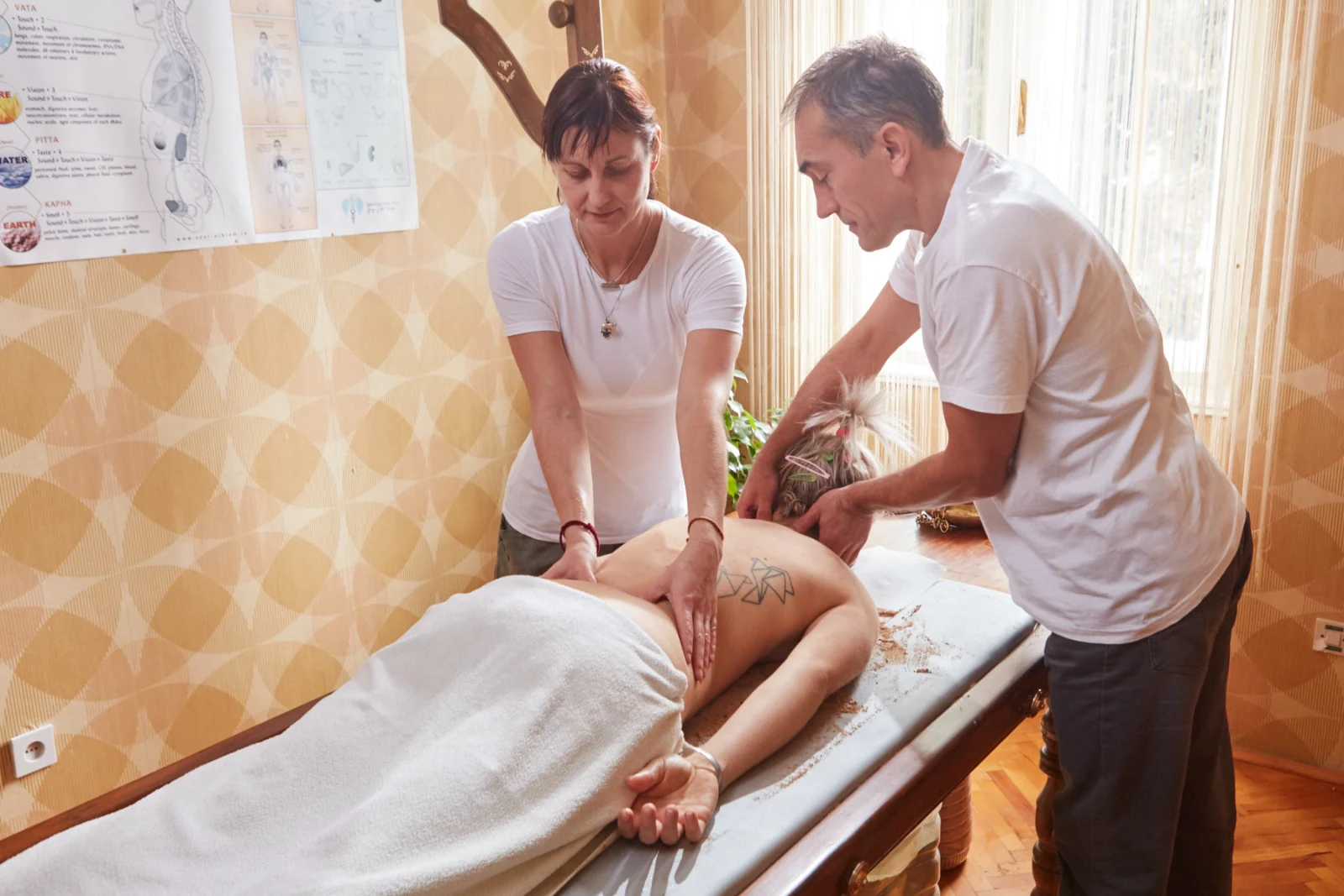
The learning period for the Diploma in Ayurveda Therapist Masseur is structured over a six-month timeframe. Upon successful completion of 50 hours of hands-on practical training (calculated as 45-minute academic hours), participants will be awarded a Certificate outlining the acquired competencies, along with a Diploma. The educational curriculum includes the following core areas:
- Human Anatomy and Physiology
- Psychology
- Various Manual therapy techniques
- Ayurvedic communication
- Development of subtle diagnostic and therapeutic skills related to the intangible dimensions of the human being — such as the Soul, Spirit, Intellect, Will, Conscience, Mind, and Emotions.
Students will receive training in various Ayurvedic massage techniques, including Rubbing and Marma Therapy, as well as foundational practices in Yoga and Meditation. Upon completion of this foundational program, students may pursue advanced studies through the Panchakarma Therapist Certification, which focuses on specialized Ayurvedic detoxification and rejuvenation therapies, including:
- Pharmacology for therapy
- Pharmaceutical science
- Pathology
- Toxicology
- Medicinal functions of integrative procedures for the therapeutic Panchakarma program.
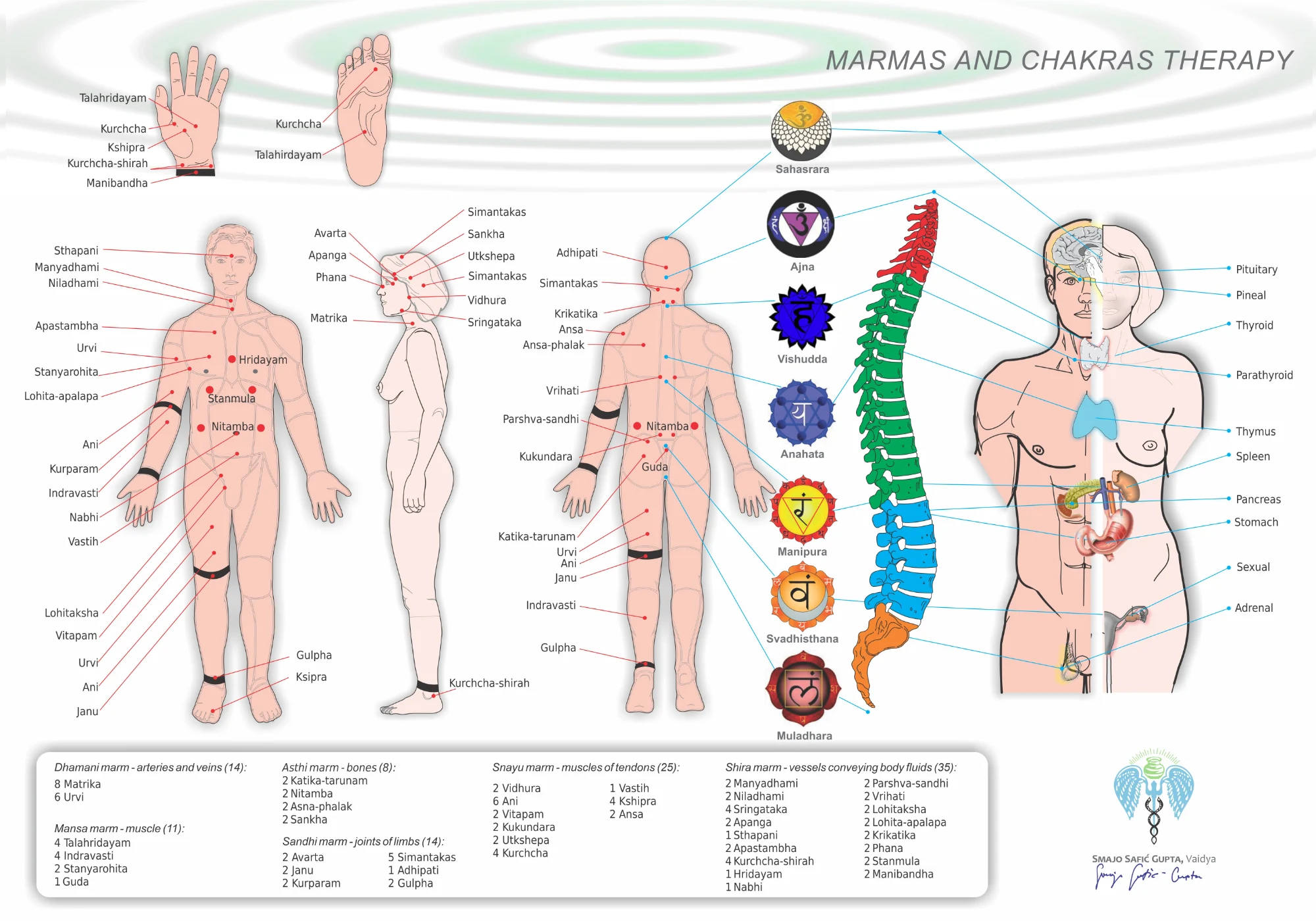
After obtaining the title of 1st Levels Diploma Ayurveda Therapist Masseur, Welcome to Learning for Diploma Panchakarma Therapist Certification. The bachelor includes Theoretical Education to “Distance” through the Internet (written material for learning theory provides mentor) and mandatory training for 90 days (3×30 days). Based on professional requirements, the Panchakarma program allows for practical training either in a clinical or wellness setting within the student’s home city or country, or at the Institute of Ayurveda, Ayur Ashram, located in Europe or India. The educational program covers the following key areas:
- Ayurvedic psychosomatics and Diagnostics
- Foundational principles of Ayurvedic treatment
- Various Manual therapy techniques
- Dietary approaches integrated with the practical use of medicinal herbs and spices—particularly focused on the digestive system.
Upon completion of the required practical training, students may continue their academic development through the advanced Ayurveda Physician study program B.A.M.S. (Bachelor of Ayurvedic Medicine and Surgery). This includes specialized modules advanced studies in Human Anatomy and Physiology:
- Ayurvedic Psychotherapy and Counselling
- Detoxification Therapies and their protocols
- History and Philosophy of Ayurvedic Medicine
- Philosophy of Language in Ayurvedic Medical Thought
- Well as advanced studies in Human Anatomy and Physiology.
Students enrolled in the B.A.M.S. level program should be aware that the course of study is academically and clinically demanding. Completion of practical training in India is mandatory and must be conducted under the supervision of an assigned mentor at an institution approved by the Consortium partner of the Institute of Ayurveda, Ayur Ashram, in accordance with AYUSH regulatory standards.
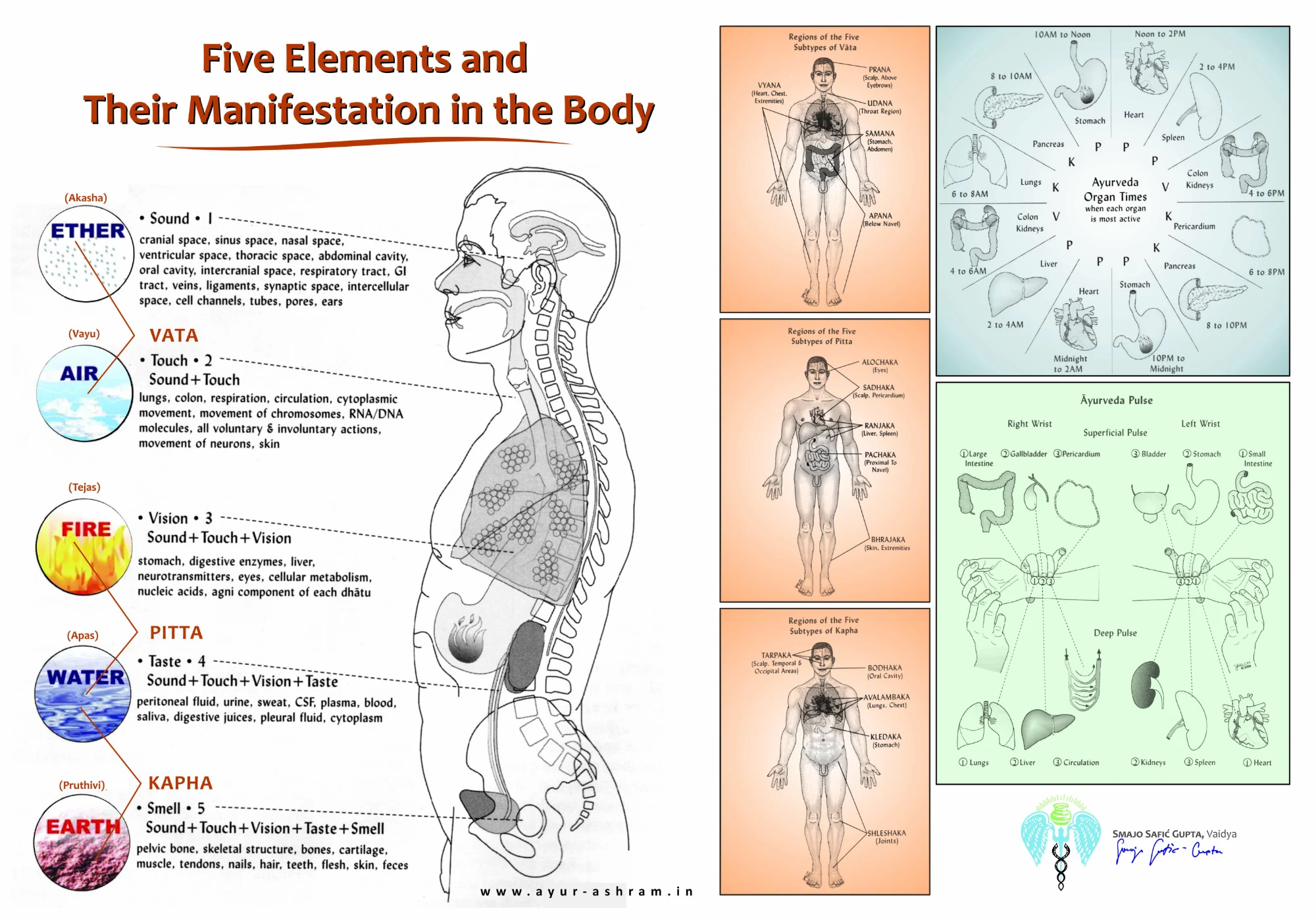
After obtaining the title of 2nd Levels Diploma Panchakarma Therapist Certification, you are first welcome to “distance” education for the Doctor’s name, which means that the student receives written materials for learning the theory and, in agreement with the mentor/professor, attends a large part of the practice in India. During the initial internship, the student of the school learns by observing how the mentors carry out processes on patients, with the aim that the learning practice enables better memory and better visual information about the course of therapeutic work of the future doctor. For admission doctor (B.A.M.S.), it is desirable, and it is logical, that the student really proves that he is capable of conducting practical classes in the subjects / and students’ specialization preferences:
- Pharmacognosy / Botany
- Pathology
- Pharmacy and Medicine
- General Medicine
- Physiology
- Biology
- Basic Principles and Ethics
- General Surgery
- Paediatrics’
- Anatomy
- Diseases of the eyes, ears, nose, throat and head
- Hygiene & Yoga
- Body cleansing
- Toxicology
- Gynaecology
- Psychotherapy
- Science of Rejuvenation / Science of Aphrodisiacs.
Learning is a complex psychological process of changing behaviour based on acquired knowledge / experience and is already visible through the knowledge gained within the First and Second Levels of education (in addition to the knowledge gained that is seen and felt from each participant through their CV). Completion of practical training in India is mandatory and must be conducted under the supervision of an assigned mentor at an institution approved by the Consortium partner of the Institute of Ayurveda, Ayur Ashram, in accordance with AYUSH regulatory standards. Studying Ayurvedic medicine B.A.M.S., in India is an academic medical degree of Ayurvedic doctor which is awarded after the classical period of study of 3+2 years.
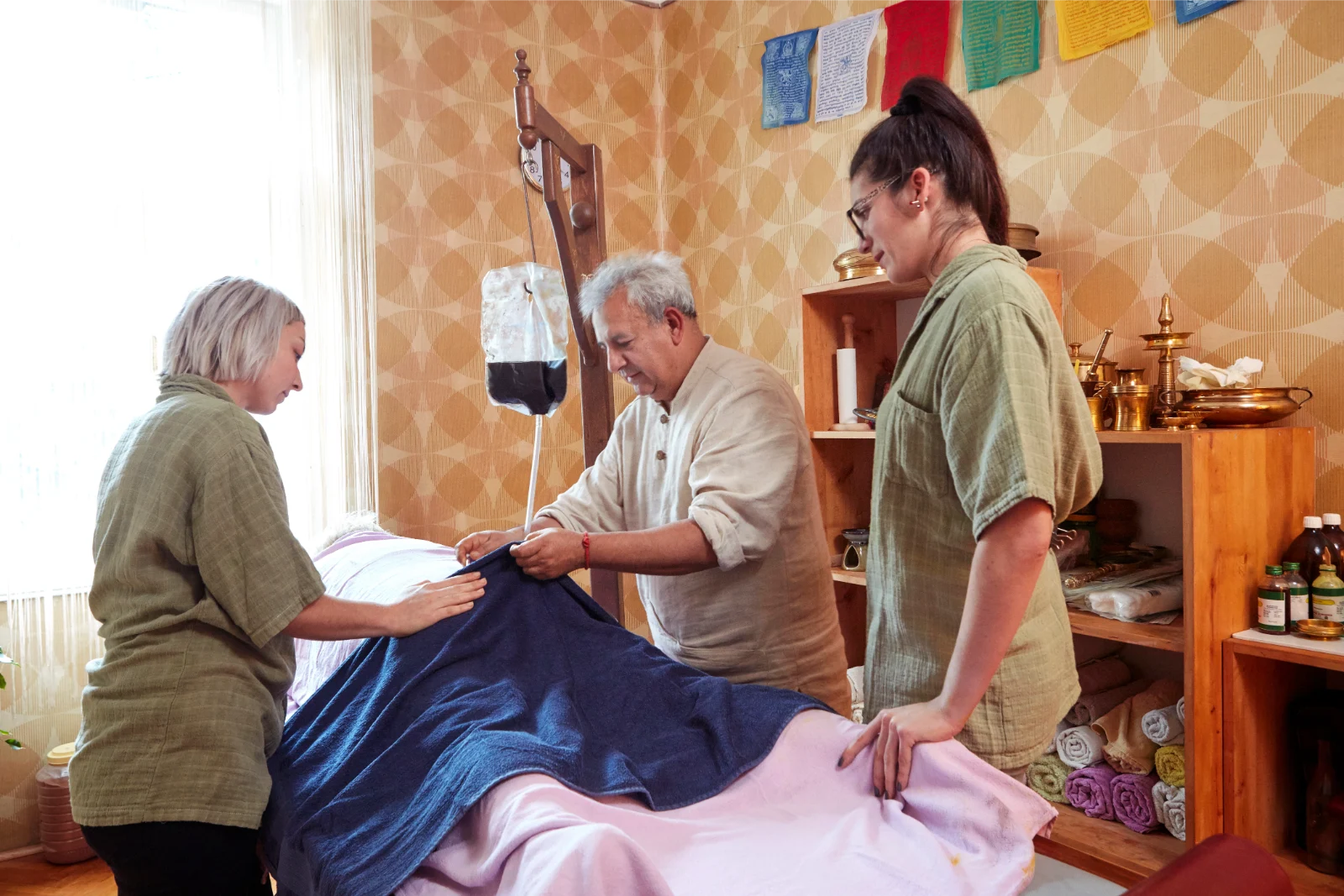
The objective of studying Tibetan Medicine, known as Sowa-Rigpa—or traditionally referred to as Amchi Medicine — is to gain a comprehensive understanding of one of the world’s oldest continuously practiced healing systems. With a living history, Sowa-Rigpa (the science of healing) continues to be widely practiced in regions such as Tibet, Mongolia, Bhutan, Nepal, parts of China, the Himalayan regions of India (including Ladakh in Jammu & Kashmir), several parts of the former Soviet Union, and increasingly in developed countries, including the USA and parts of Europe. In Tibetan medicine, herbal-based remedies are primarily used: compresses made of herbs, berries, leaves, and roots that grow in specific places and are harvested at certain times of the day and year. Therefore, medicines are natural in the fullest sense of the word. In contrast to the approach of Western medicine, Tibetan medicine does not focus on an external invader (like viruses or bacteria) but works on restoring the energy balance, which—if properly established and maintained—renders the body resistant to disease.
Because the mind contains 84,000 afflictive emotions, it gives rise to the same number of diseases. In Tibetan, diagnosis is called Ngozen, meaning “to recognize” or “to identify”. Treatment is tailored to each individual, with the first message to the patient being that the illness resides in the mind. This doesn’t mean the illness is imagined, but that their lifestyle is unbalanced and needs attention. Lifestyle adjustments are recommended, including spiritual practice, physical exercise, and reorganization of daily habits like sleeping, eating, and time management.
Over time, Tibetan medicine developed a wide range of treatments, incorporating influences from Chinese medicine and Ayurveda. In its diagnostic theory, all illnesses are categorized as either “hot” or “cold” disorders, or a complex mixture of the two > Hot disorders are caused by an excess of Bile, and Cold disorders are generally due to imbalances in Wind or Phlegm. The human body is thoroughly explained in Sowa-Rigpa, with chapters on embryology, anatomy, physiology, and neurology, describing the functions of each organ and body part. When in balance, these forces are essential for sustaining and improving health. The “Tree of Physiology and Pathological Transformations” illustrates of:
- rLung (Wind) – shown on blue leaves, governing lungs, heart, circulation, speech, digestion, excretion, and growth (related to the central and peripheral nervous systems).
- mKhrispa (Bile) – shown on yellow leaves, related to the small intestine, blood, lymph, and gallbladder. Functions include regulation of body temperature and metabolism.
- Badken (Phlegm) – composed of earth and water elements, shown on other leaves, maintaining fluid balance and aiding early stages of digestion.
Traditionally, Buddhist medicine is considered the supreme form of healing, with ignorance seen as the root of all diseases and disorders. Like Buddhism, Tibetan medicine is based on the belief that pain can be alleviated or cured only by understanding the nature and causes of disease. The behaviour and ethics of both physician and patient are heavily rooted in Buddhist principles. Ignorance gives rise to the three root causes of disease (Nespa-gsum / Three doshas):
- Dodchags (desire/lust) – root of rLung (Wind / Vata)
- Zessdang (anger) – root of mKhrispa (Bile / Pitta)
- Timug (mental darkness) – root of Badken (Phlegm / Kapha).
A spiritual component is also central to Tibetan medicine, with great attention paid to the patient’s personality. Meditation is also encouraged, using simple breathing exercises and mental focus. Physical therapies such as acupuncture, massage, and inhalation therapy are applied. Other treatments include herbal and mineral compresses, bloodletting, medicinal baths, and wraps. Tibetan acupuncture differs from Chinese acupuncture in that it generally uses a single Golden needle, focusing on the chakras, especially the seventh chakra, located at the top of the head.
The science of Sowa-Rigpa is deeply intertwined with Buddhist philosophy, which holds that all living beings are sick until they overcome ignorance, the root cause of suffering. Anger, desire, and confusion create the three disturbed humours — Wind, Bile, and Phlegm. Pulse diagnosis is the most important diagnostic tool in Sowa-Rigpa. Practitioners use pulse diagnosis as a tool to assess the health of all the major organ systems of the body. When taking the pulse, various factors are taken into accounts such as the time of day, season, and sex of the patient. The doctor palpates one’s pulse with six fingers (three fingers on each hand) – thus the composition of doshas, condition of internal organs and duration of a disease are determined. Pulse diagnostics can detect an existing or an oncoming imbalance or disease. Examination analysis of stools provide important information about the digestive system. It is extremely important to check the urine —observation of urine color, clarity and odor. Another diagnostic method is questioning the patient — exploring case history, current condition, family background, and physical or emotional changes. An experienced doctor already sees many things through visual examination (tongue, ears, urine, etc.).
Patient treatment in Tibetan Medicine is primarily based on adjusting nutrition and lifestyle. If these adjustments are not sufficient for recovery, a doctor prescribes Tibetan herbal mixes, and medicine or accessory / external therapies. Advanced diseases may call for external therapies like moxibustion, venesection (bloodletting), fomentation, therapeutic massage, or surgical procedures, depending on severity. Compound medicines follow two major systems > Isro – taste-based combinations, and Nuspa – potency-based combinations. There are about several types of medicinal preparations, such as: decoctions, powders, pills, linctus, medicated ghee, bhasmas, medicated wine, paste, medicated bath. Buddhist rituals and mantras also play an important role in both treatment and the pharmaceutical preparation process — including prayers, sound healing (bells, himalayan bowls, etc.). According to the theory of Jung-wa-lna (Five Elements), Sowa-Rigpa holds that all natural substances have medicinal and therapeutic properties. Medicinal materials are classified into eight groups:
- Rinpochesman – Precious metals and stones
- Sasman – Substances from mud and earth
- Rdosman – Stones and minerals
- Shingsman – Tree-derived plant substances
- Rtsisman – Medicinal essences and exudates
- Thangsman – Shrubs and plant materials for decoctions
- Snosman – Medicinal herbs
- Srogchagssman – Animal-derived substances.
Medicines are also categorized based on six primary tastes: sweet, sour, salty, pungent, astringent and bitter. Each taste corresponds to certain elements: sweet→ Earth + Water, sour→ Fire + Earth, salty→ Water + Fire, bitter→ Water + Air, pungent→ Fire + Air, astringent→ Earth + Air. These tastes help balance specific humours: sweet, sour, salty, and pungent alleviate rLung (Wind)→ bitter, sweet, and astringent alleviate mKhrispa (Bile)→ pungent, sour, and salty alleviate Badken (Phlegm). Additional factors in determining a drug’s effect include: Zuzessum – three post-digestive tastes→ Nuspa-rgyad – eight potencies→ No bo – specific actions of each medicines.
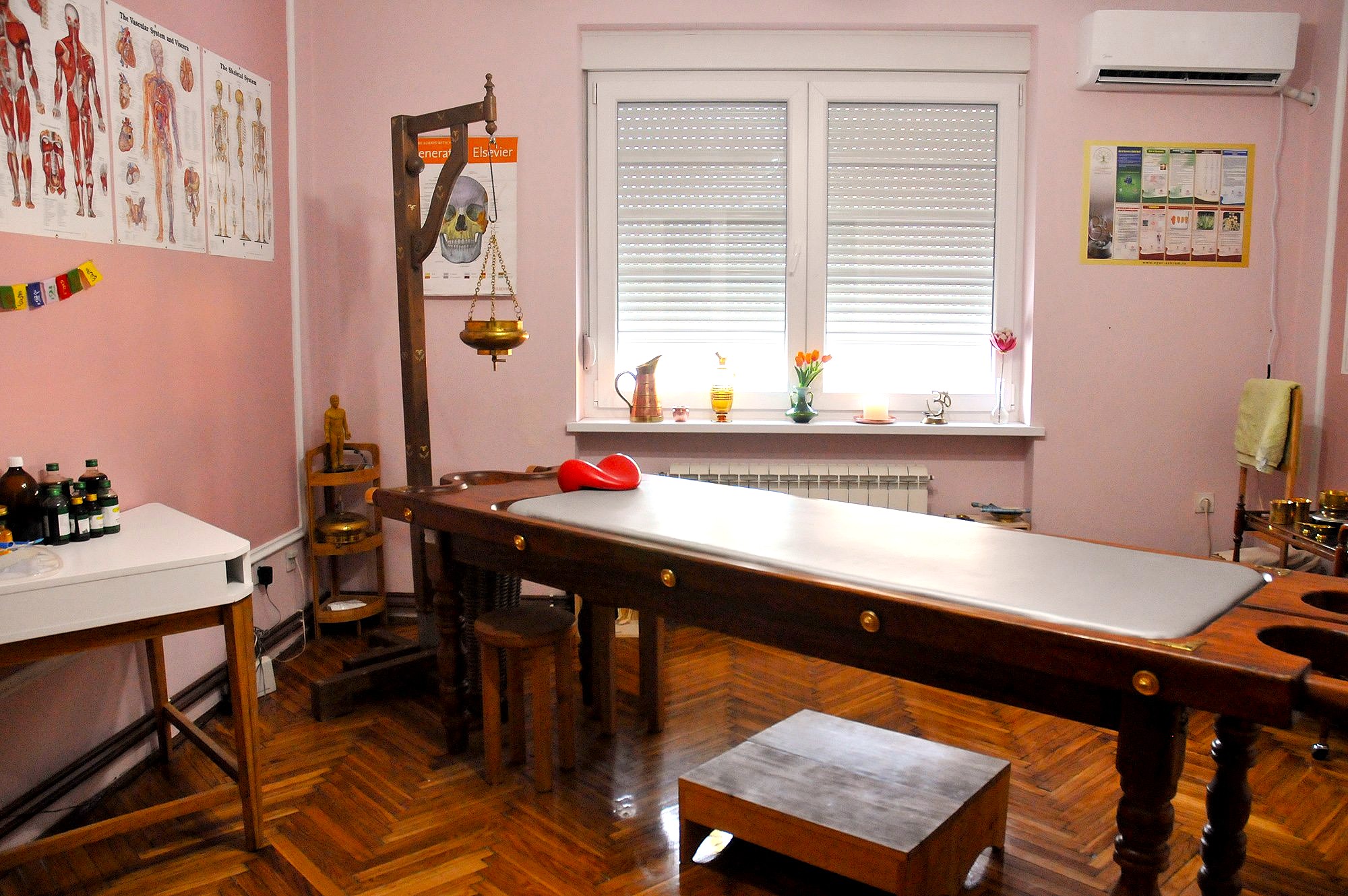
The influence of Sowa-Rigpa, along with Buddhism and other Tibetan arts, gradually extended to neighboring Himalayan regions such as India, Nepal, and Bhutan. The foundational medical texts were first translated into Russian in 1908. Since the early 20th century, portions of these texts have been translated into Japanese, German, French, and English. Notably, since the late 20th century—due in large part to the efforts and global presence of His Holiness the 14th Dalai Lama—an increasing number of scholars and researchers, both from the East and the West, have come to recognize the profound depth, unique qualities, and holistic wisdom embedded in the Tibetan medical system. Consequently, we are witnessing a continuous rise in interest and appreciation for studying Tibetan medical treatment methods.
In the Tibetan Buddhist medical and tantric traditions, astrology is not regarded as superstition but rather as a practical tool to understand and heal our body and mind on the gross, subtle and very subtle levels. One can experience many sicknesses and misfortunes due to outer, inner and secret astrological reactions and malevolent celestial influences. Tibetan astrology (dkar rtsis) is a traditional discipline of the Tibetan peoples that has influence from both Chinese astrology and Hindu astrology Jyotish. Tibetan astrology is one of the ‘Ten Sciences’ (rig-pa’i gnas bcu; Sanskrit: daśavidyā) in the enumeration honoured by this cultural tradition. The experience of Vedic medical astrology psychotherapy is that cognition in man reveals an unchanging, healthy, divine essence, which creates an extremely constructive mood and gives great motivation for problem solving and healing. In their development, a person should indulge in the guidance of natural intelligence and not allow it to be suppressed by the external influences of Samskaras – deep-rooted patterns in the mind or by the overly egoistic part of us – the illusion (Maya).
The six main mental illnesses in Ayurveda (India), and Sowa-Rigpa (Tibet) are: Kama (excessive desires), Krodha (anger, aggression), Lobha (greed), Moha (attachment), Mada (selfish pride), and Matsarya (jealousy, envy). The feelings that most affect the psychosomatic state of each individual are: Harsha (euphoric joy or anger), Kama (sensual desires and wishes), Shoka (sadness, grief), Lobha (greed), Dainya (helplessness), Krodha (anger, aggression), Irsya (intolerance, rudeness, Matsarya (envy, jealousy), Asuya (evil, gossip), Vishada (depression) and Bhaya (fear, phobia).
These adverse influences take our original nature, Prakruti, out of balance and cause disharmony, Vikruti, which blocks the healthy development of a person. Otherwise, by nature a person develops harmoniously and healthily. The mind is always united with the soul, which is consciousness itself. Thus, the perception of the mentioned object became a conscious act. Then the soul sends an impulse to the motor-bodily organs (karmendriyas), these organs connect with the object in question and perform a certain bodily action. Feelings are interdependent, from someone or something. Expectations are natural in all people, if they do not exceed certain limits. Strong emotions block the power of reason and spirit.
Traditional Tibetan medicinal bathing was inscribed onto the UNESCO Representative List of the Intangible Cultural Heritage of Humanity. The entry is officially known as: Lum medicinal bathing of Sowa-Rigpa. In the Tibetan language, the word “LUM” refers to the traditional knowledge and practices of bathing in natural hot springs, herbal water, or steam to balance body and mind, maintain health, and treat disease. The education also includes aspects of traditional Tibetan astrology, rituals, religion, and many elements of daily life. To become a doctor of Tibetan medicine, students are trained by experienced practitioners, including farmers, herdsmen, and urban residents, who serve as educators. Each practitioner holds a specific role:
- Manpa (physician)
- Lum Jorkhan (pharmacist)
- Manyok (assistant).
Sowa-Rigpa is traditionally taught under the Amchi system (e.g., Dorjee Tseten Bhutia – Doctorate in Tibetan Medicine), following:
- The guru–shishya (teacher-disciple) tradition, or
- The gyud-pa (hereditary) system, where knowledge is passed from father to son through generations.
It takes several years of demanding theoretical and practical training to become a skilled Amchi or Manpa (traditional doctor of naturopathic Tibetan medicine). Upon completion of their studies, the aspiring Amchi must undergo a community-based graduation ceremony, in the presence of several professional Amchi, known as the Amchi Label Award Ceremony. Today, alongside the modern educational system, official institutions provide structured education in Tibetan medicine. These programs typically follow a 4 + 2 year model (4 years of undergraduate and 2 years of graduate training), under the Ministry of Culture of the Government of India. Notable institutions include:
- Central Institute for Buddhist Studies, Leh
- Tibetan Medical and Astrological Institute, Dharamsala
- Central University for Tibetan Studies, Sarnath
- Chagpori Tibetan Medical Institute, Darjeeling.
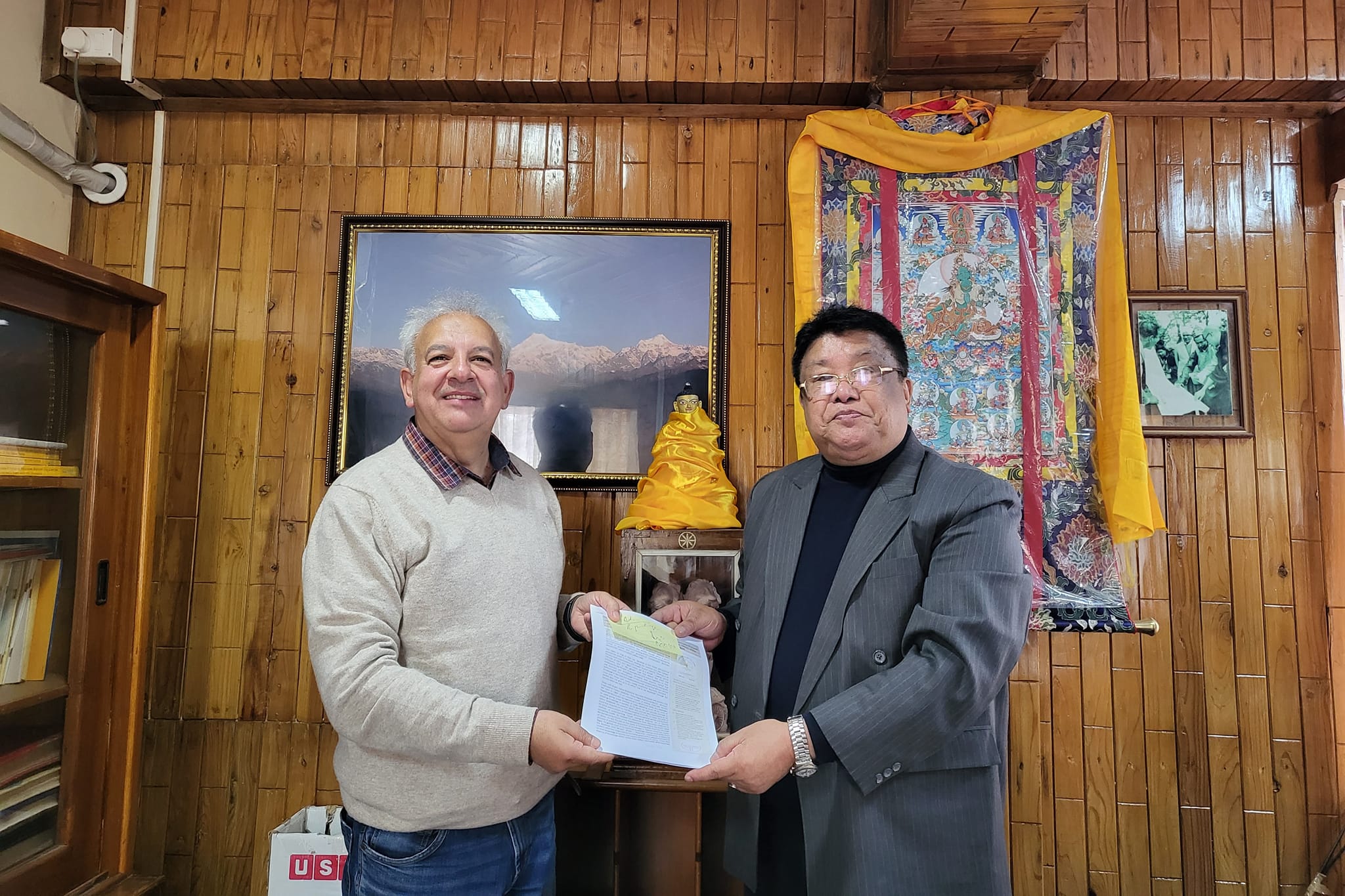
Mr. Sir, P.W. Rinzing, the Secretary National Institute of Tibetology, Sikkim & Smajo Safić Gupta, Prof. Vaidya Dr. Manpa of them are living the “DREAM” of learning university degree and meaningfully spreading Tibetan medicine in Europe. The MOU contract is concluded – Namgyal Institute of Tibetology, Sikkim & Institute of Ayurveda, Ayur Ashram.
Traces of Naturopath (program from Ayurveda and Tibetan medicine / Sowa-Rigpa) can be found around 400 BC. It was established in Europe in the second half of the 19th century. Naturopaths often have classical medical training and work hand in hand with the Western Hippocratic school medicine. The six (6) fundamental principles of naturopathy are summarized according to the Hippocratic school.
- 1st principle, is the principle of the healing power of nature: the work is based on finding a balance between body, mind and spirit.
- 2nd principle, to discover and cure the cause, and not just the consequences: by determining the true cause, a diagnosis is subsequently made – treatment.
- 3rd principle, do no harm: naturopaths are careful not to ignore old symptoms and thus open the way for new ones.
- 4th principle, advocate holistic treatment: naturopaths observe the person from the emotional, mental and spiritual spheres, not just the physical.
- 5th principle, the naturopath is a teacher: they teach the patient to take responsibility for their own health by teaching them healthy living, proper nutrition and exercise.
- 6th principle) advocates prevention: naturopaths transfer experience and knowledge about health to patients in order to achieve a Happy Life.
At the Institute of Ayurveda, Ayur Ashram, various therapeutic methods are taught and used within the Sowa-Rigpa and Naturopathic Medicine curriculum:
- Acupressure
- Acupuncture
- Diagnostics
- Hydrotherapy
- Nutrition
- Phytotherapy
- Various Massage Techniques.
Differences between Naturopathy and Conventional Medicine (health as balance between body, mind, and spirit; the role of natural therapies in prevention and treatment). Health as a balance – Yin and Yang / core concepts such as Qi, meridians, and the holistic approach in Eastern medicine. The advanced program includes the following:
- Diagnostic Methods in Eastern medicine: pulse diagnosis, tongue analysis, visual observation, palpation, medical history, body function analysis, secretion analysis, and the five element diagnostic method.
- Meridians: basic principles of acupuncture and acupressure, needle insertion techniques, stimulation of acupuncture points, and acupuncture as a tool to balance Qi energy.
- Energy Therapies and Physical Techniques: Qi Gong and Tai Chi–exercises for strengthening and balancing Qi–Integrating energy-based movement practices into daily Life.
- Moxibustion and Cupping / Vacuum therapy: techniques for heating acupuncture points using dried herbs (mugwort). Application of vacuum cups to stimulate blood circulation and release stagnant energy.
- Nutrition in Eastern medicine and Naturopathic nutritional principles: concepts of cold-warm / wet-dry balance. Relationship between diet and disease prevention. Matching food to individual energy needs. Use of superfoods, natural supplements, and the role of spices, herbs, and teas in daily nutrition.
- Clinical Practice and Ethics in in Eastern Medicine:iIntegration of naturopathy with conventional medicine. Practical application of acupuncture, massage, and therapeutic exercises. Treatment planning, therapeutic protocols, and the role of counselling in naturopathic practice.
- Techniques for working with body fluids: blood, lymph, and cerebrospinal fluid.
Training the Naturopathy Therapist (one year) to a Doctorate in Naturopathy three to for five years – depends on your education / knowledge from Traditional, Complementary and Integrative Medicine (TCIM). For those pursuing a Doctorate in Tibetan Medicine, this foundational stage is also considered a crucial entry point. Specialized education in Tibetan Medicine generally requires an additional three to for five years of focused study.
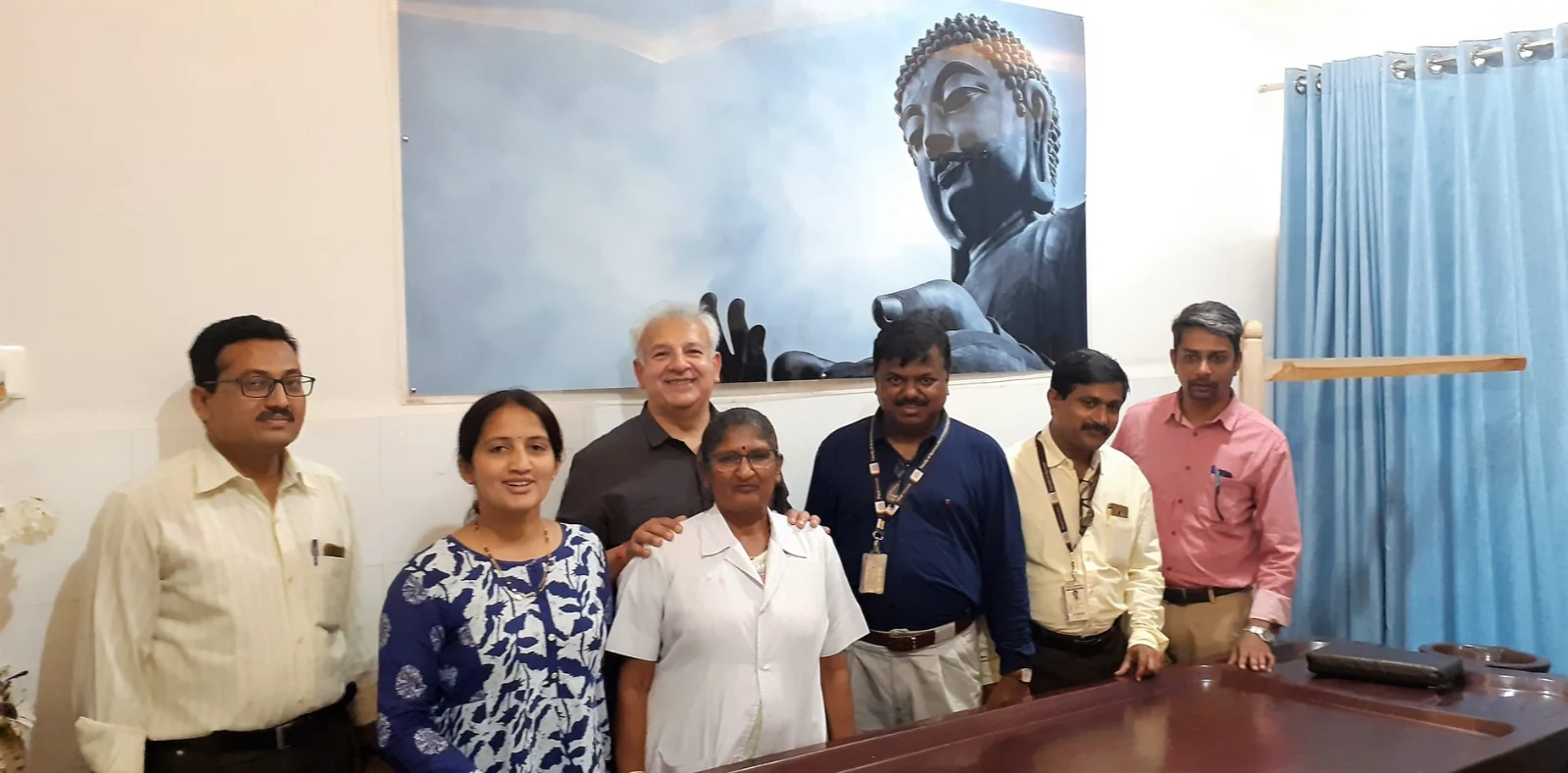
Health stems from the inner harmony of all aspects of the meaning of our lives, our thoughts, feelings and actions,
which in themselves affect the sensible relationships we foster with our families, friends and colleagues.
Smajo Safić Gupta, Prof. Vaidya Dr. Manpa
Institute of Ayurveda, Ayur Ashram (co/founder and leadership)



